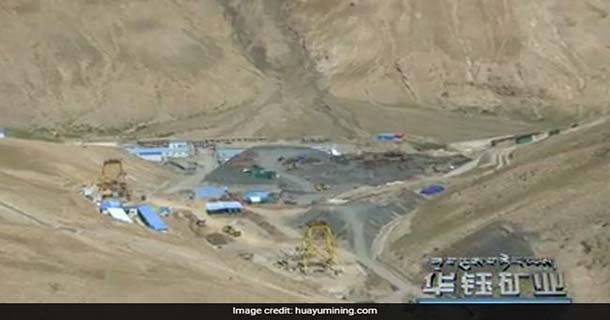 China continues to expand its mining activities in south Tibetan border areas. According to a report by the South China Morning Post (SCMP), the relatively independent newspaper published in China, geological surveys have found large deposits of gold, silver and precious minerals in Lhunze county – a mere 15 kilometres away from the disputed border with India’s Arunachal Pradesh.
China continues to expand its mining activities in south Tibetan border areas. According to a report by the South China Morning Post (SCMP), the relatively independent newspaper published in China, geological surveys have found large deposits of gold, silver and precious minerals in Lhunze county – a mere 15 kilometres away from the disputed border with India’s Arunachal Pradesh.
The report raises concerns about the motive behind China’s mining activities there. According to an interview with Zheng Youye, a professor at the Chinese University of Geosciences in Beijing, the discovered ores are expected to have a value of US$ 58 billion / £ 44 billion. But the article reports Zheng Youye as suggesting that the development of border areas might also be aimed at gaining control of Indian territories which are claimed by China [Arunachal Pradesh].
Within the last year, Lhunze county has turned into the biggest mining area within the Tibetan Autonomous Region, says the SCMP report. But there are signs that China intends to further develop the area as construction is underway on an airport with the capacity to handle passenger jets. Several tunnels and roads have already been built in close proximity to the 3,488 kilometre Line of Actual Control [LAC, or the McMahon Line, the de facto border between India and Tibet agreed in the early 20th Century by India, Tibet and the United Kingdom but never recognised by China].
 Speaking about the South China Morning Post article in a press briefing the Chinese Foreign Ministry spokesperson Lu Kang said the area mentioned by the report “totally belongs to China.” He pointed out “China’s sovereignity” regarding geological surveys and mining in its territory.
Speaking about the South China Morning Post article in a press briefing the Chinese Foreign Ministry spokesperson Lu Kang said the area mentioned by the report “totally belongs to China.” He pointed out “China’s sovereignity” regarding geological surveys and mining in its territory.
While it is possible that the Indian side of the border offers similar minerals, the area has not been the focus of geological surveillance or development – causing many residents to leave the area. At the same time, Lhunze county on the Tibetan side shows an immense economic growth, with the average income of residents tripling during the last few years.
The McMahon line south of Lunze county is held to be illegal by the Chinese government. They claim Arunachal Pradesh – an Indian state – as “Little Tibet” which, they say, is Chinese territory. “[China] never recognised the so-called Arunachal Pradesh”, said Geng Shuan, a Chinese government spokesperson, earlier this year. The SCMP quotes Professor Zheng as saying, “China conquered South Tibet after launching a war against India in the early 1960s. But our troops had to retreat quickly because we had no people there to hold the land”.




 Print
Print Email
Email